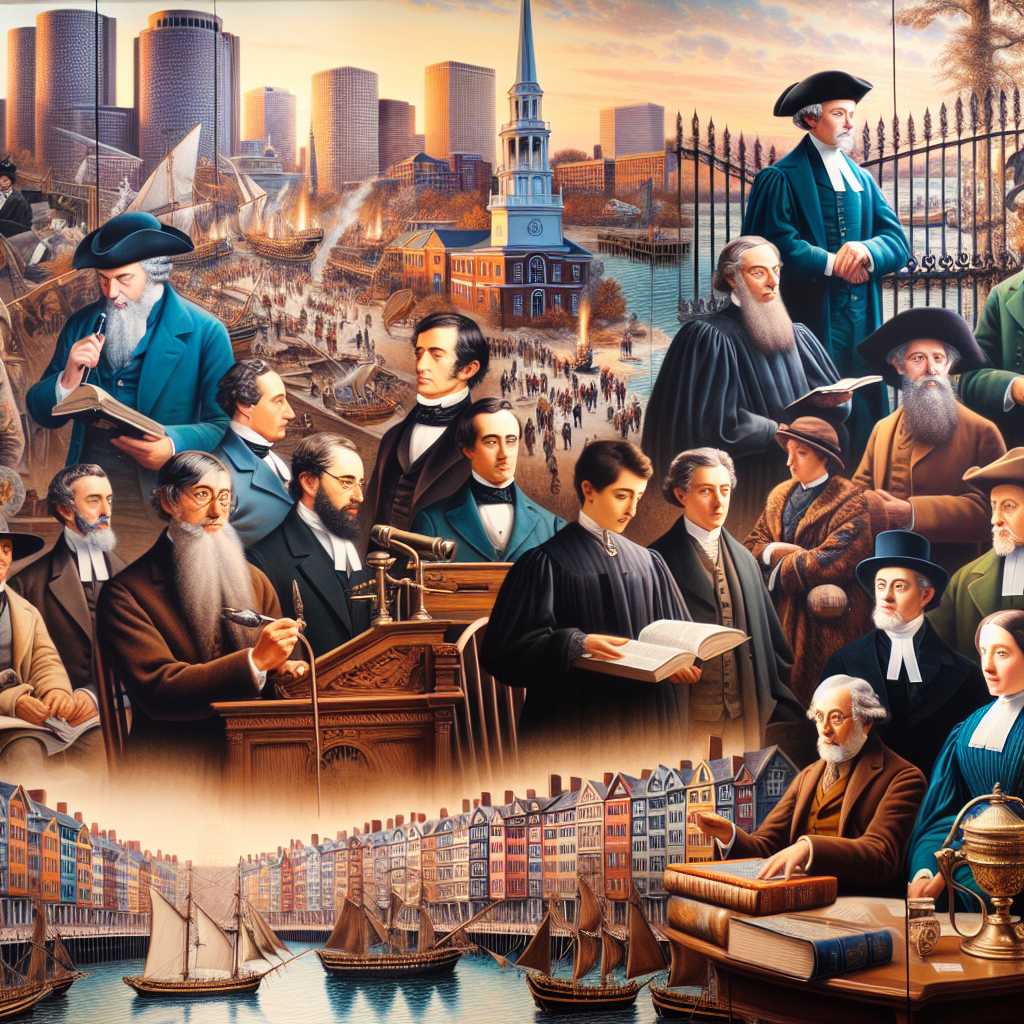Example Article
Origins and Definitions of the Boston Brahmin
The term ‘Boston Brahmin’ traditionally refers to a social group consisting of the old, wealthy, and influential families of New England, especially those rooted in Boston’s history. These families are often characterised by their Anglo-Saxon Protestant heritage, elite educational backgrounds, and longstanding civic involvement. The word ‘Brahmin’ itself is borrowed from the Indian caste system, symbolising a priestly class known for wisdom and social prestige. In the American context, it evokes a similarly exclusive aristocracy whose influence shaped much of New England’s cultural and political landscape.
While the Boston Brahmins are frequently portrayed as a monolithic elite class, historians and sociologists have identified distinct typologies within this group. These types reflect variations in wealth, values, professional orientation, and social roles. They encompass everything from the patrician merchants who built fortunes through trade to the scholars and clergymen who preserved intellectual traditions. Understanding these nuances offers a richer view of how social hierarchy functioned in Boston over centuries.
This differentiation within the Brahmin class explains why certain families maintained prominence through public service or philanthropy, while others thrived in business or academia. It also sheds light on the internal dynamics of privilege and power that shaped New England society. By dissecting these types, one can appreciate not only the uniformity often associated with Boston Brahmins but also their diverse contributions to American history.
The Merchant Aristocrats: Guardians of Economic Legacy
One prominent type within the Boston Brahmin classification is the merchant aristocrat. These families emerged during the colonial period as successful traders and shipowners who capitalised on Boston’s strategic port location. Their wealth was often accumulated through maritime commerce, including trade with Europe, the Caribbean, and Asia. This economic foundation allowed them to wield considerable influence in both local politics and society.
Merchant Brahmins were typically characterised by their conservative financial practices, maintaining wealth across generations through careful estate management and investments in burgeoning industries such as railroads and banking. They were patrons of institutions like Harvard University and Massachusetts General Hospital, reinforcing their role as stewards of public welfare while enhancing their social standing.
Despite their economic focus, these families often embraced traditional values tied to community responsibility and cultural preservation. Their homes in Beacon Hill or Back Bay symbolised not just affluence but adherence to a refined lifestyle marked by discretion and decorum. This type of Boston Brahmin exemplifies how commerce and social leadership intertwined to shape New England’s aristocracy.
The Intellectual Clergy: Custodians of Thought and Morality
Another significant subset of Boston Brahmins comprises clergy members, educators, and scholars who were instrumental in forging the region’s intellectual identity. Rooted in Puritan traditions that emphasised education and moral rectitude, these individuals occupied pulpits at prominent churches or professorships at Ivy League universities.
Their influence extended beyond religious instruction; they were pivotal in founding schools, libraries, and cultural societies that nurtured civic virtue among citizens. Figures such as Ralph Waldo Emerson or Henry Adams illustrate this strand’s commitment to transcending mere wealth accumulation in favour of cultivating ideas that shaped American philosophy and historiography.
The intellectual clergy typology highlights how Boston Brahmin status was not solely economic but deeply intertwined with an ethos of public service through knowledge dissemination. Their legacy persists today in institutions that continue to promote liberal arts education and ethical discourse.
Progressive Reformers: The Socially Conscious Brahmins
A more modern typology within the Boston Brahmin class includes progressive reformers who leveraged their privilege to address societal inequities. Emerging prominently during the late 19th and early 20th centuries, these individuals challenged some traditional norms while remaining committed to community leadership.
They championed causes such as public health improvements, labour rights, women’s suffrage, and urban planning reforms. Unlike their merchant or clerical counterparts focused on maintaining status quo structures, progressive Brahmins sought to modernise society through activism backed by resources and influence.
This group illustrates an evolution within the Boston Brahmin identity: from guardians of inherited wealth and culture to dynamic agents of change. Their work laid groundwork for many aspects of contemporary social policy in Massachusetts and beyond.
Conclusion: The Multifaceted Nature of Boston Brahmin Identity
Examining Boston Brahmin types reveals a complex tapestry rather than a singular elite identity. From merchant aristocrats safeguarding economic prosperity to intellectual clergy shaping moral discourse and progressive reformers driving societal change, each typology contributes distinctively to New England’s historical narrative.
Understanding these internal distinctions enriches our comprehension of how privilege was exercised differently across generations within Boston’s upper echelons. It also challenges stereotypes that portray Brahmins simply as static symbols of old wealth or exclusivity.
Ultimately, recognising the diversity within Boston Brahmin lineages underscores broader themes about American aristocracy — how it adapts over time while influencing culture, politics, and society at large.
Notes
- Boston Brahmins played a foundational role in establishing Harvard University.
- Many Boston Brahmin families trace their lineage back to early colonial settlers from England.
- The term ‘Boston Brahmin’ was popularised by writer Oliver Wendell Holmes Sr.
- Progressive reform efforts by some Brahmins helped shape early 20th-century urban policies in Boston.

